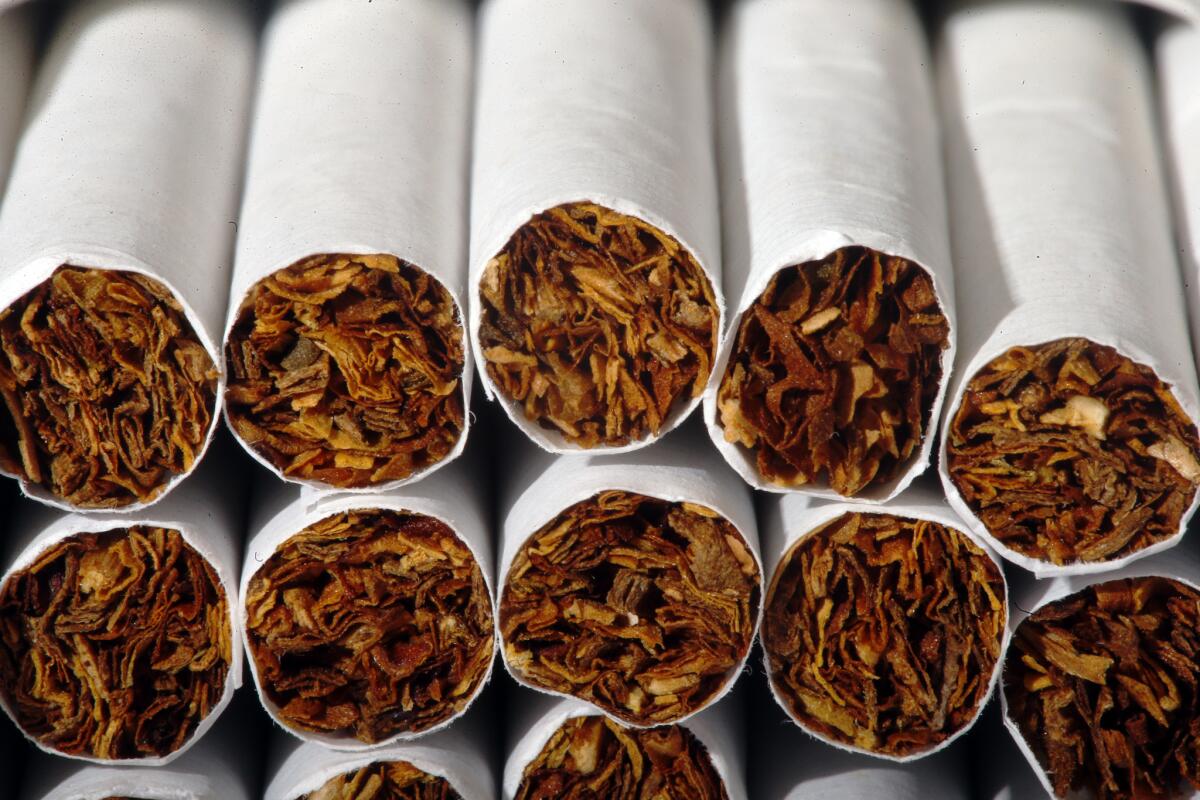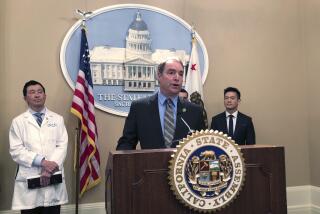Experts call for ‘tobacco-free world’ and raising legal age for cigarettes

Among a generation of kids ranging from today’s 15-year-olds to babies only now being contemplated, shifting the minimum legal age for tobacco purchases from 18 to 21 across the United States now would prevent a quarter-million premature deaths, says a new report.
For children born between 2000 and 2019, such a policy shift would reclaim a projected 4.2 million years of life now expected to be lost to tobacco-related illnesses, an Institute of Medicine analysis concludes. And down the road even further, boosting to 21 the minimum age for those buying cigarettes would save 4,000 babies whose lives would otherwise be claimed by sudden infant death syndrome.
Those benefits would not likely be evident for 30 years, the panel of independent experts wrote in an analysis requested by the Food & Drug Administration.
The report only hints at the likely immediate effect of raising the legal age for tobacco purchases: an outbreak of political wrangling and opposition to a policy that would affect small businesses and drive tobacco use further into the shadows for young smokers.
The Family Smoking Prevention and Tobacco Control Act of 2009 set a national minimum age of 18 for tobacco sales and purchases, and three states have gone further, setting the age for cigarette purchasing at 19. An additional 30 local jurisdictions in six states have voted to prohibit consumers under 21 from buying tobacco products.
The Institute of Medicine report is titled “Public Health Implications of Raising the Minimum Age of Legal Access to Tobacco Products.” Its release Thursday coincided with a series of articles and commentaries in the journal the Lancet calling for a “tobacco-free world” by 2040.
The authors of the Lancet’s centerpiece editorial said a so-called tobacco-free world -- in which fewer than 5% of adults smoke -- is “socially desirable, technically feasible and could become politically practical.”
Publication of the Lancet series coincided with the start in Abu Dhabi, United Arab Emirates, of the 2015 World Conference on Tobacco or Health, the world’s largest gathering of tobacco-control advocates, policy makers, researchers and public health and clinical experts.
Making tobacco use “out of sight, out of mind and out of fashion -- yet not prohibited” could be achieved only with a “turbo-charged approach,” wrote a team of public health experts from Australia, Hong Kong and India. To achieve it, the United Nations, national leaders, and public- and private-sector institutions all would need to collaborate, they wrote.
In addition to governments setting policies such as those assessed by the Institute of Medicine, Lancet’s “call to action” called for employers worldwide to ban tobacco use in workplaces; pharmacies across the globe to stop selling tobacco products and stores selling them to be limited and tightly regulated; advertising to end completely; and smoking-cessation efforts to be stepped up and supported by life and health insurers everywhere.
“High-income countries have reached a tipping point in their efforts to control the tobacco industry,” the authors of the call to action wrote. “This success has now to be achieved by low-income and middle-income countries to accelerate progress toward a tobacco-free world by 2040. The benefits to global health will be enormous.”
The Institute of Medicine report, released Thursday, also makes clear that for adults and children alike, driving down tobacco addiction will require thinking ahead -- decades ahead.
And it makes clear that adolescents are ill-equipped to engage in such forward reasoning. Their developing brains are particularly vulnerable to getting hooked on nicotine -- tobacco’s most addictive component -- and they are likely to undervalue the downstream costs of behaviors they choose.
And when it comes to resisting tobacco, young adults aren’t much better: Rates of tobacco use among Americans 21 to 24 stand at 34.1%, making them the most likely age group to smoke.
But adults -- at least those over 25, whose brains have largely completed development -- are more adept at weighing costs and benefits in the distant future, said the Institute of Medicine report. And they’re more immune to the addictive rewards of tobacco, which is clear from the fact -- cited in the report’s fine print -- that a 25-year-old who has not started smoking has less than a 1% probability of ever taking up the habit.
The Institute of Medicine report considered the relative health effects of a range of age limits on the sale and purchase of tobacco products. The analysis underscored the importance of influencing the decisions of adolescents between 15 and 17, whose extended experimentation with tobacco is most likely to establish them as ongoing daily smokers.
In the end, the panel appears to find a minimum age of 21 for tobacco purchasing the “just right” solution.
Raising the to 19, the panel concluded, would stop some such youngsters from initiating smoking, and likely save lives.
But studies have shown that 15- to 17-year-olds already rely on smoking family members and friends to supply them with cigarettes. As a result, the panel reasoned, they’re more likely to be discouraged from trying tobacco by their sense of social distance from people who can legally smoke than they are by legal barriers to purchasing tobacco.
And these young decision-makers will perceive a greater distance between themselves and 21-year-olds (and even more distance from 25-year-olds) than they will from 19-year-olds.
Setting a minimum age for tobacco purchase of 19 is even less likely to drive down smoking rates among 18-year-olds, the committee report concluded. At 18, American youths who have not started smoking are already less likely to start than younger Americans. And those determined to do so have ready access to 19-year-old friends to buy tobacco for them.
Citing the likelihood of lax enforcement of a 25-year-old minimum for buying tobacco, the panel suggested that setting the bar that high was unlikely to prevent many youths from initiating a smoking habit.
Follow me on Twitter @LATMelissaHealy and “like” Los Angeles Times Science & Health on Facebook.







